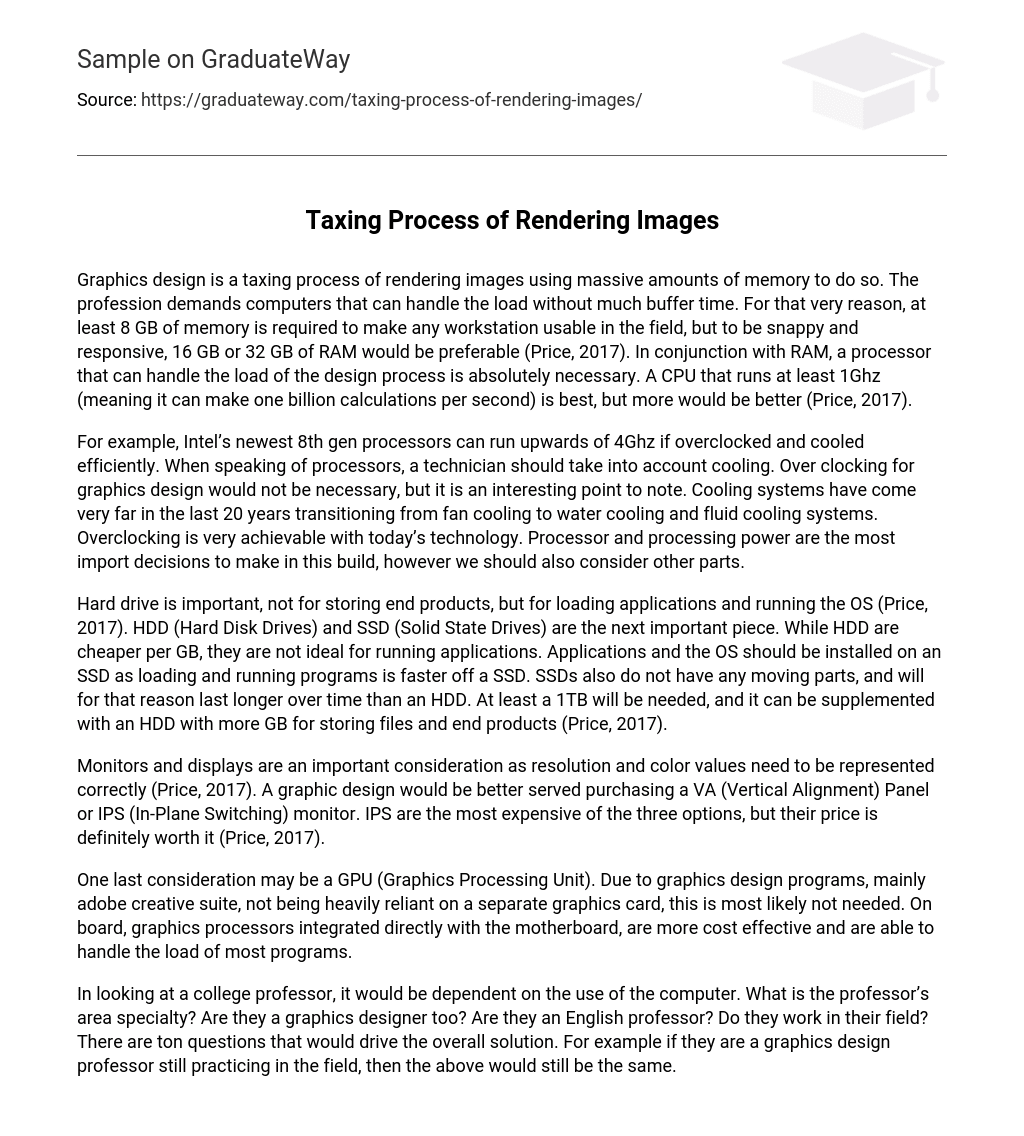Graphics design is a taxing process of rendering images using massive amounts of memory to do so. The profession demands computers that can handle the load without much buffer time. For that very reason, at least 8 GB of memory is required to make any workstation usable in the field, but to be snappy and responsive, 16 GB or 32 GB of RAM would be preferable (Price, 2017). In conjunction with RAM, a processor that can handle the load of the design process is absolutely necessary. A CPU that runs at least 1Ghz (meaning it can make one billion calculations per second) is best, but more would be better (Price, 2017).
For example, Intel’s newest 8th gen processors can run upwards of 4Ghz if overclocked and cooled efficiently. When speaking of processors, a technician should take into account cooling. Over clocking for graphics design would not be necessary, but it is an interesting point to note. Cooling systems have come very far in the last 20 years transitioning from fan cooling to water cooling and fluid cooling systems. Overclocking is very achievable with today’s technology. Processor and processing power are the most import decisions to make in this build, however we should also consider other parts.
Hard drive is important, not for storing end products, but for loading applications and running the OS (Price, 2017). HDD (Hard Disk Drives) and SSD (Solid State Drives) are the next important piece. While HDD are cheaper per GB, they are not ideal for running applications. Applications and the OS should be installed on an SSD as loading and running programs is faster off a SSD. SSDs also do not have any moving parts, and will for that reason last longer over time than an HDD. At least a 1TB will be needed, and it can be supplemented with an HDD with more GB for storing files and end products (Price, 2017).
Monitors and displays are an important consideration as resolution and color values need to be represented correctly (Price, 2017). A graphic design would be better served purchasing a VA (Vertical Alignment) Panel or IPS (In-Plane Switching) monitor. IPS are the most expensive of the three options, but their price is definitely worth it (Price, 2017).
One last consideration may be a GPU (Graphics Processing Unit). Due to graphics design programs, mainly adobe creative suite, not being heavily reliant on a separate graphics card, this is most likely not needed. On board, graphics processors integrated directly with the motherboard, are more cost effective and are able to handle the load of most programs.
In looking at a college professor, it would be dependent on the use of the computer. What is the professor’s area specialty? Are they a graphics designer too? Are they an English professor? Do they work in their field? There are ton questions that would drive the overall solution. For example if they are a graphics design professor still practicing in the field, then the above would still be the same. If they are simply teaching classes in English, business, modern languages, they do not need to pay attention such specifications.





